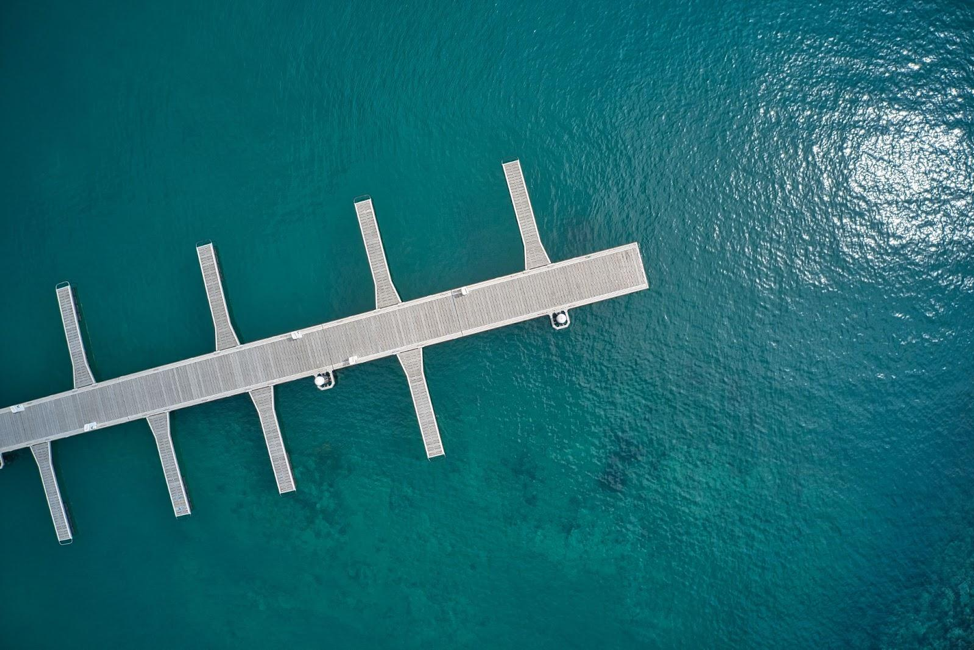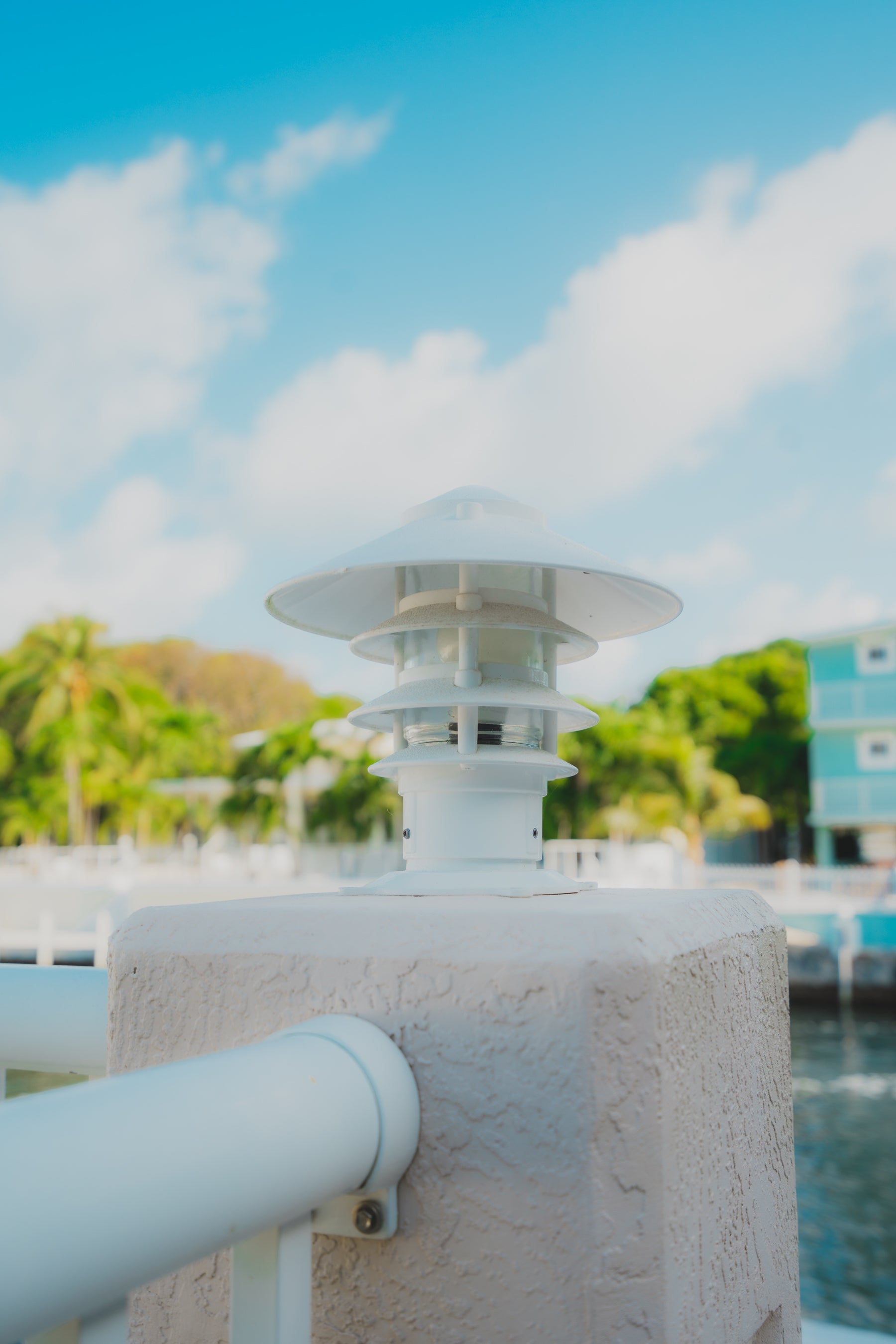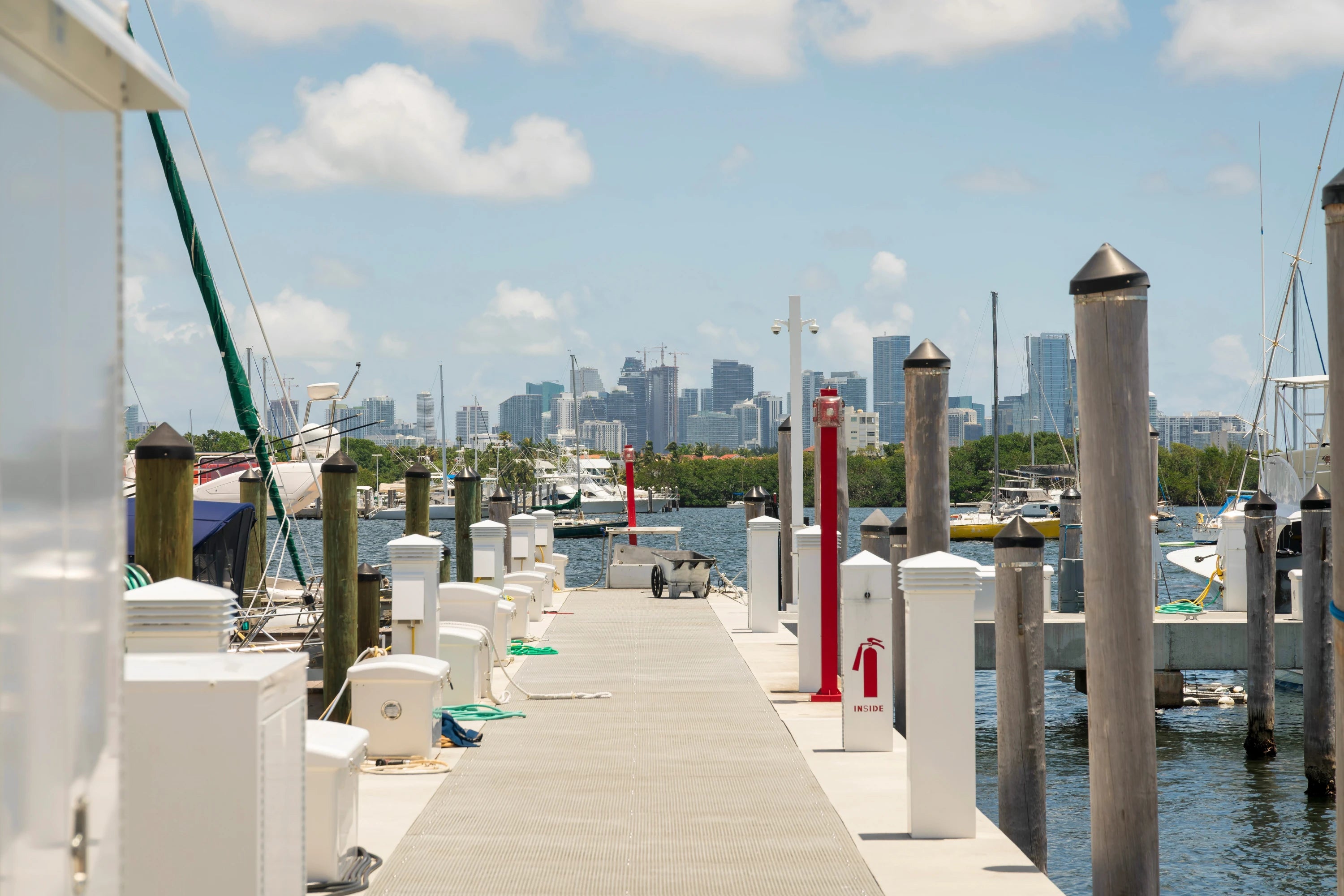
How to Anchor & Secure Floating Docks
Share
Did you know that a float docking system helps prevent boat damage during hurricanes compared to stationary docks?
These days, those with waterfront properties across the U.S. consistently prefer floating docks because of their durability, stability, and ease of use, particularly with boat lifts and other dock accessories.
If you’ve purchased a floating dock kit or want to purchase one but are unsure how to proceed with constructing it, you’ve come to the right place.
This guide will help you anchor and secure a floating dock!
Consider Your Floating Dock’s Environment
Many factors go into the anchoring process for floating docks.
Most importantly, consider the body of water where your dock will be. For example, if you’re building on the ocean, the dock will face large waves and more drastic water fluctuations than a dock on a small lake.
Furthermore, areas prone to hurricanes should consider hurricane holes in addition to the docking system.
As you can see, the dock’s environment will determine the best anchoring method to avoid compromising stability and security.
Understand Anchoring Methods
Before learning how to anchor a floating boat dock, you must understand the four different dock anchoring methods available. We explain them in detail below.
Stiff Arm Anchoring
Stiff arm anchors are great for near-shore docks holding heavy loads in areas with minimal water level changes. They use a winch and reinforced arms to connect the dock to the shoreline.
Cable Anchoring
This is a popular anchoring method because of its mobility and adaptability. Although suitable for shallow waters, cable anchors are more common in deep waters because the system can quickly adapt to changing weather and water depths. The anchors connect to weights or the shore.
Pole & Sleeve Anchoring
These anchors are best for windy areas with high waves. They use vertical galvanized steel sleeves to attach the dock and anchors to the seabed.
You can also use a winch or cable system with pole and sleeve anchoring for improved flexibility during unfavorable weather.
Pile Anchoring
While pile anchors are great for docks with heavy loads, they are best for docks facing changing water levels. Pile slides in rollers help to keep the anchoring system securely attached to the floating dock.
You drive the pile anchors into the seabed for maximum stability. However, because of this, you can’t change the anchors’ position. Be sure you mount them correctly before cold weather arrives.
Gather Necessary Anchoring Materials
In addition to understanding the anchoring methods, there are several materials you’ll need to collect. These items are necessary to anchor your floating dock successfully.
Concrete Anchors
Concrete blocks will serve as your anchors to keep the dock secure at all times. While there are several varieties, a dock professional can help you select the best concrete blocks for your docking system.
Galvanized Chains
Galvanized chains connect the concrete anchors on the seabed or lake bottom to the pier. In other words, they serve as the anchor chain. They also support the entire anchoring system.
Galvanized steel is beneficial for preventing corrosion in marine environments.
Quick Links & Eyebolts
A quick link is a connector. It connects the chain to the rebar or the chain to the eyebolts. Eyebolts are a fastener that connects to the quick link, forming a ring. They support the entire dock system.
Know How Much Weight You Need
Next, you’re probably wondering how much weight is necessary to anchor a floating dock.
It would be best if you mustn’t have excess weight under your dock, but you need enough to keep the dock secure. You don’t want to tie your boat to the docking system only to have the dock and boat float away in a storm.
The size and number of boats mooring at the dock will affect how much weight you need. For example, mooring several dozen kayaks is still far less weight than mooring one pontoon boat.
Experts say for most floating docks, you should have a minimum of 600 lbs. at the furthest corners of the pier. Docks near the shore may require less weight, while docks in more volatile environments may require more weight. When in doubt, ask a professional.
For stabilization, you should have an anchoring method every 24 to 30 feet.
Choose an Appropriate Anchor Layout
Your floating dock’s layout can affect its stability. To create the perfect design, consider the following:
- Crisscross layout
- Chain length
- Tension cords
Crossing the chains can add durability to your dock. This works well if you include chains and anchors on either side of the pier.
Regarding chain length, ensure not to cut your chains too short. Chains that are too short will cause tension and stress. However, some choose to leave extra material for slack while anchoring. Leaving extra chain length can also help the dock rise and fall if the water level changes.
If changing water levels concern you, then consider tension cords. These cords lessen stress and help improve stability since there is less slack than leaving extra chain length.
Install Your Anchoring System
First, place a wood slab under the anchors so you don’t damage the decking material. Then connect a chain to the eyebolts or rebar of the anchors that will sit near each other.
Next, gently maneuver the anchors in the water to the bottom of the seafloor using the wood plank. Then, attach the chains to the floating dock. After securing the chains, you can cut them. As mentioned, make sure you don’t cut them too short.
Additionally, you can install a gangway to connect the dock to the shore for better accessibility. Many gangways have handrails for additional security.
Get Help From Dock Professionals
Now that you know how to anchor a floating dock, you should be able to get to work securing your dock system. However, we know that you may still have questions or concerns.
In that case, find your local Haven Dock dealer and let our professionals help! We can assist with dock anchoring and ensure your dock remains functional for years to come by using bumpers and other essential dock accessories, like cleats!



